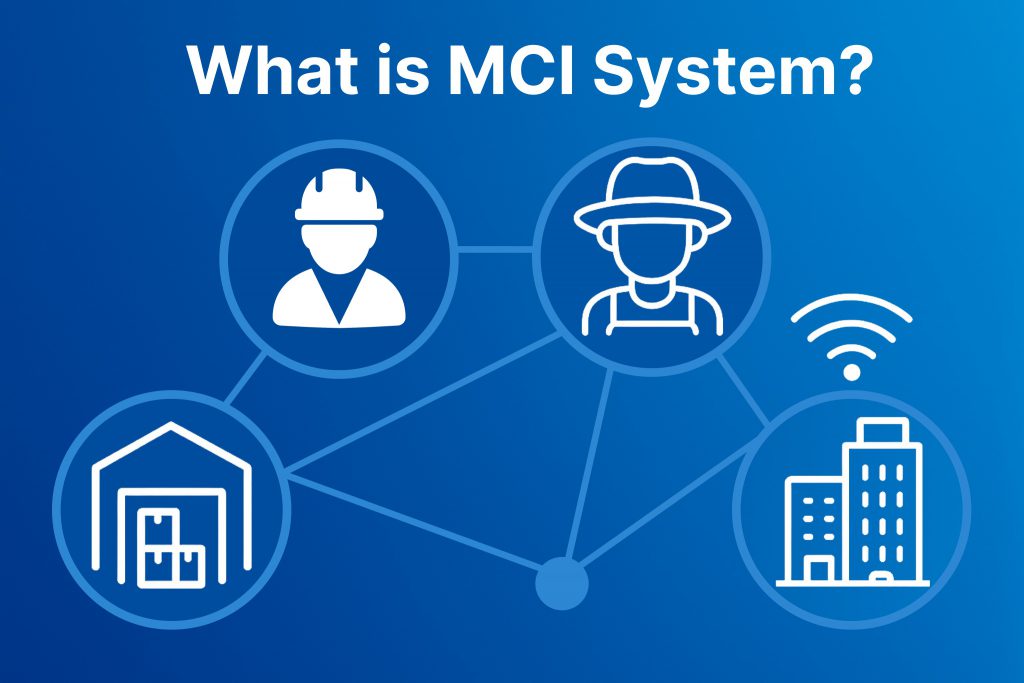
In an era where data and logistics management are becoming increasingly complex, effective monitoring and tracking of assets, users, and stored goods has become essential. The MCI system was developed to address this need, integrating multiple components through IoT (Internet of Things) technology.\
Key Components of the MCI System

The MCI system is comprised of three core components:
1. Location Tracking
This component focuses on identifying the real-time location of items or equipment within a storage facility. The MCI system uses a structured warehouse layout that includes three hierarchical levels:
- Zone: The main area or section (e.g., Zone A, Zone B)
- Loc (Shelf): Specific shelves or sub-locations within each zone (e.g., A.Loc 1, A.Loc 2)
- Bin: Smaller compartments within each shelf for precise item placement
2. People Management (User Management System)
MCI supports assigning access rights based on user position and role, allowing for detailed control over data access and system functionality according to responsibilities.
3. Asset Management
This involves tracking and managing various assets and equipment used within the system, such as:
- Sensors and monitoring devices
- Tools installed within the storage area
- Groups of devices (sensor groups)
Applications of the MCI System
The MCI system can be applied across various industries—particularly in environments that require secure, precise, and traceable asset management. Key use cases include:
1. Smart Farming
In agricultural contexts, MCI can help manage farms more efficiently by:
- Controlling irrigation, fertilizers, or chemicals via connected IoT assets
- Locating seed, fertilizer, and product storage using warehouse-style mapping
2. Smart Warehouse
MCI is purpose-built for intelligent warehouse management, enabling:
- Detailed location tracking of inventory (Zone / Shelf / Bin)
- Monitoring employee actions based on their access rights to prevent unauthorized handling
- Tracking transportation equipment within the warehouse
- Real-time tracking of goods and devices as they move
3. Smart Building
For buildings with complex internal systems, MCI enables:
- Monitoring and managing electrical equipment, lighting, and HVAC through grouped assets
- Systematic storage of maintenance tools and spare parts in a centralized facility
- Monitoring various sensors such as fire alarms and CCTV systems
Conclusion
The MCI system is a powerful tool for improving warehouse and asset management within organizations. With a flexible, well-structured design, MCI can be adapted to various sectors including smart farming, smart warehousing, and smart buildings. It enhances accuracy, reduces errors, and supports intelligent operations at every level of the organization.
